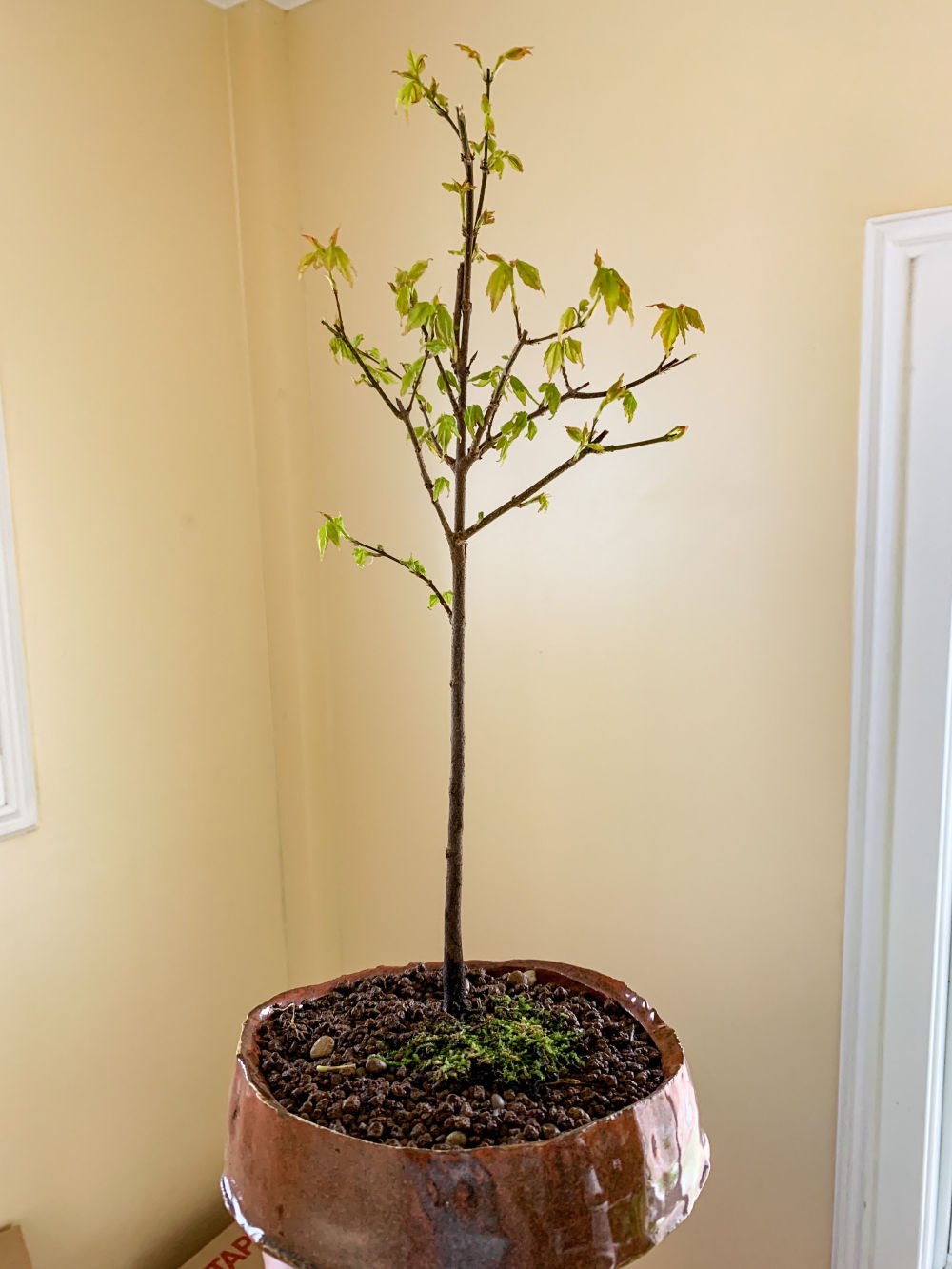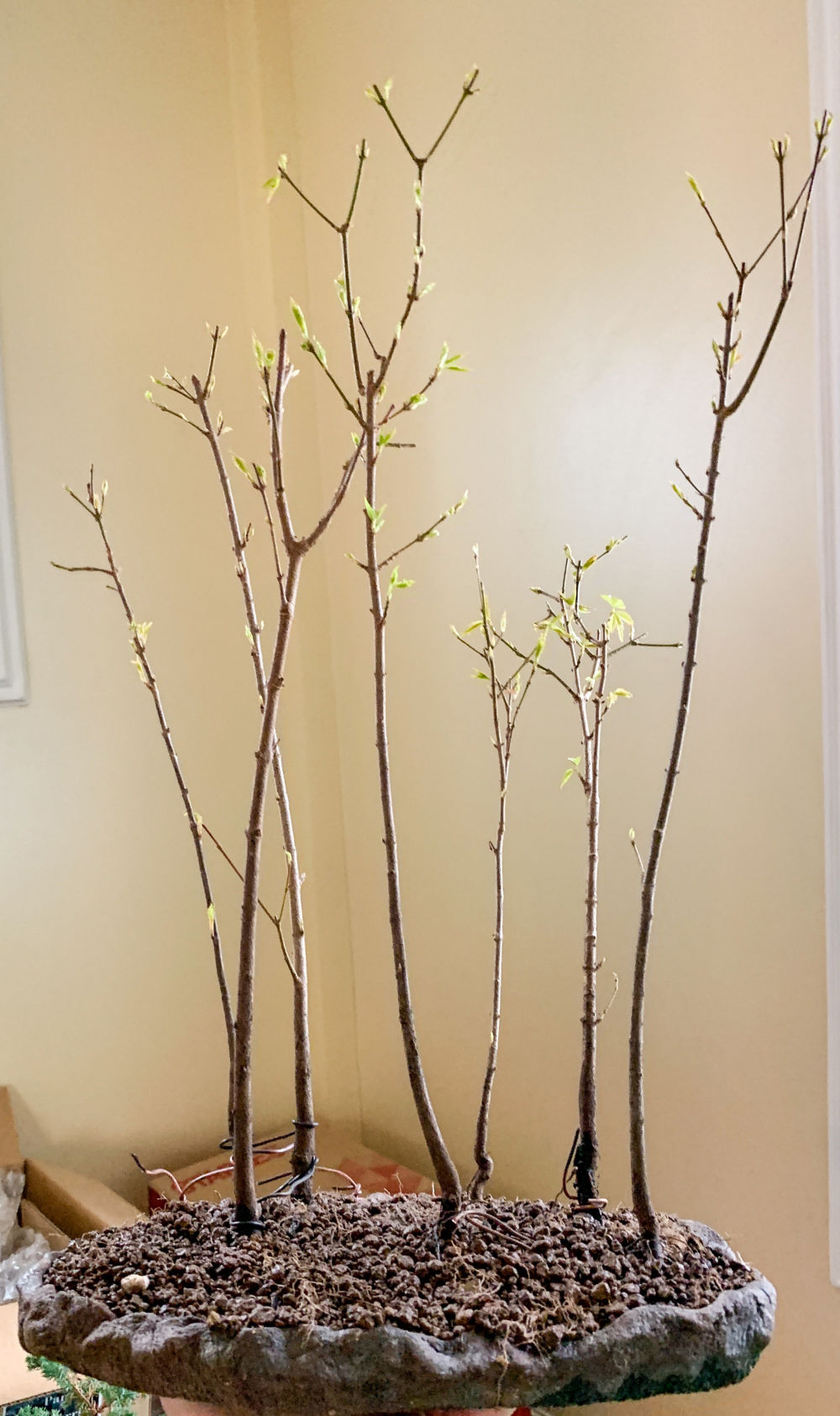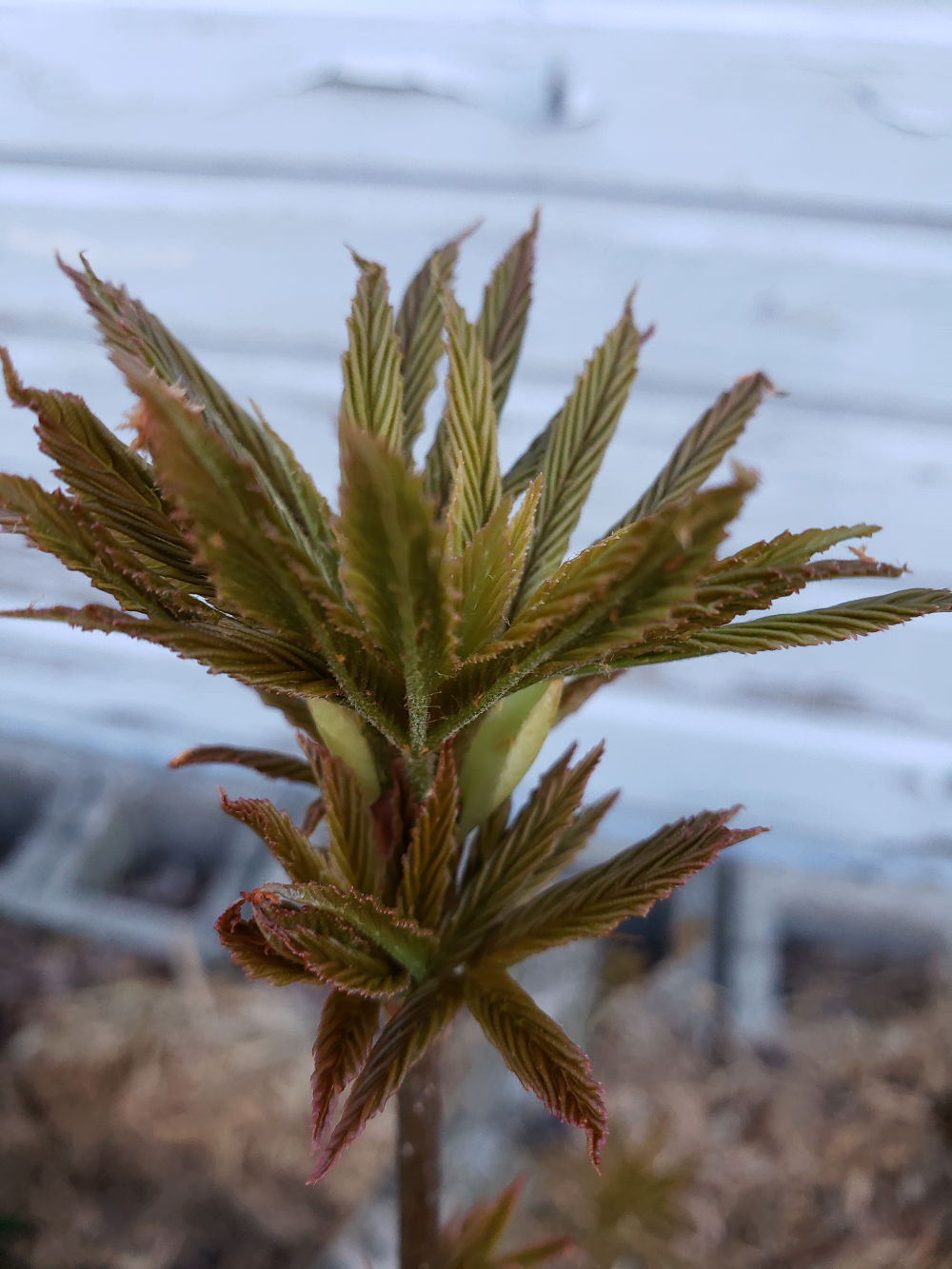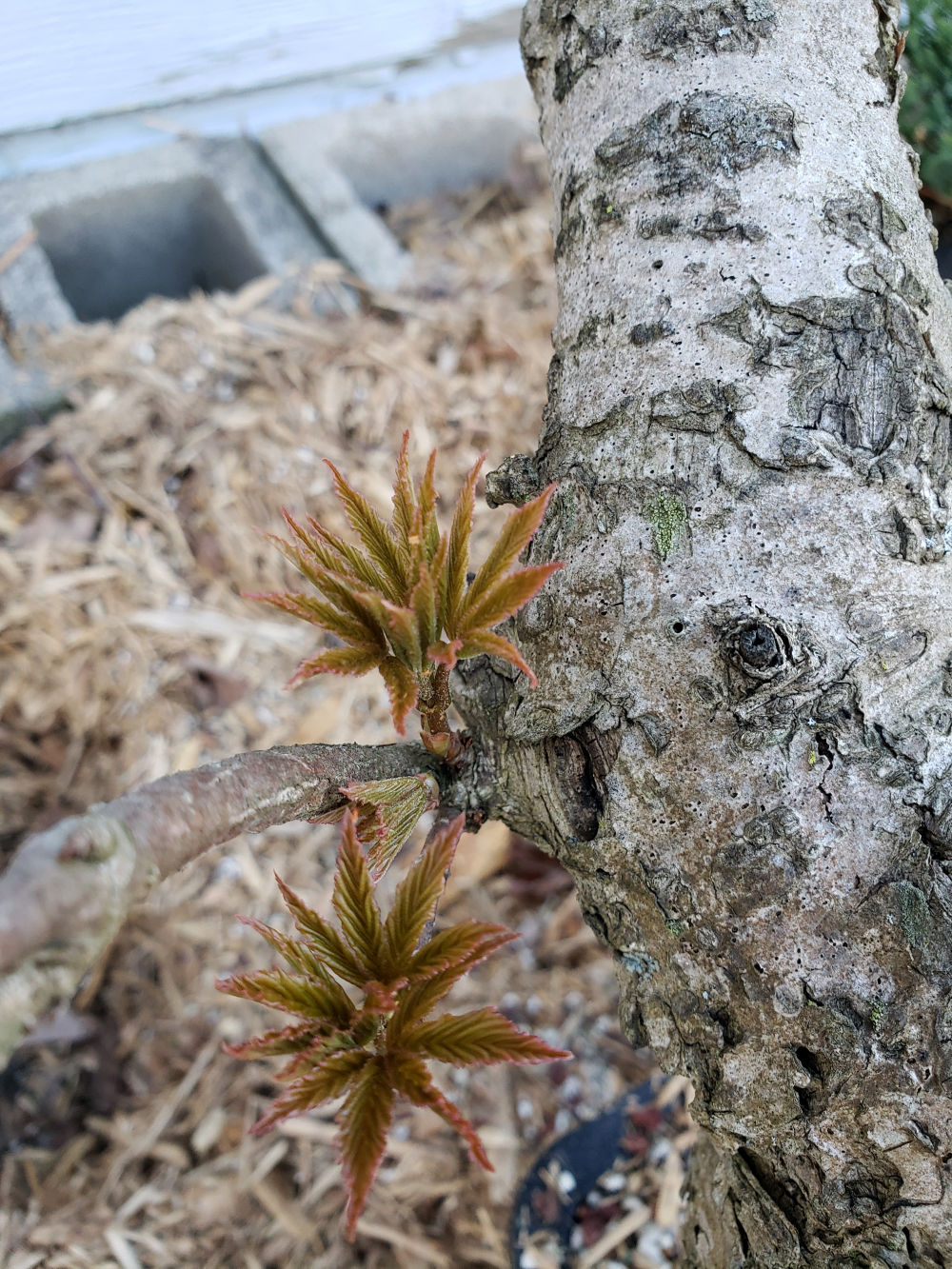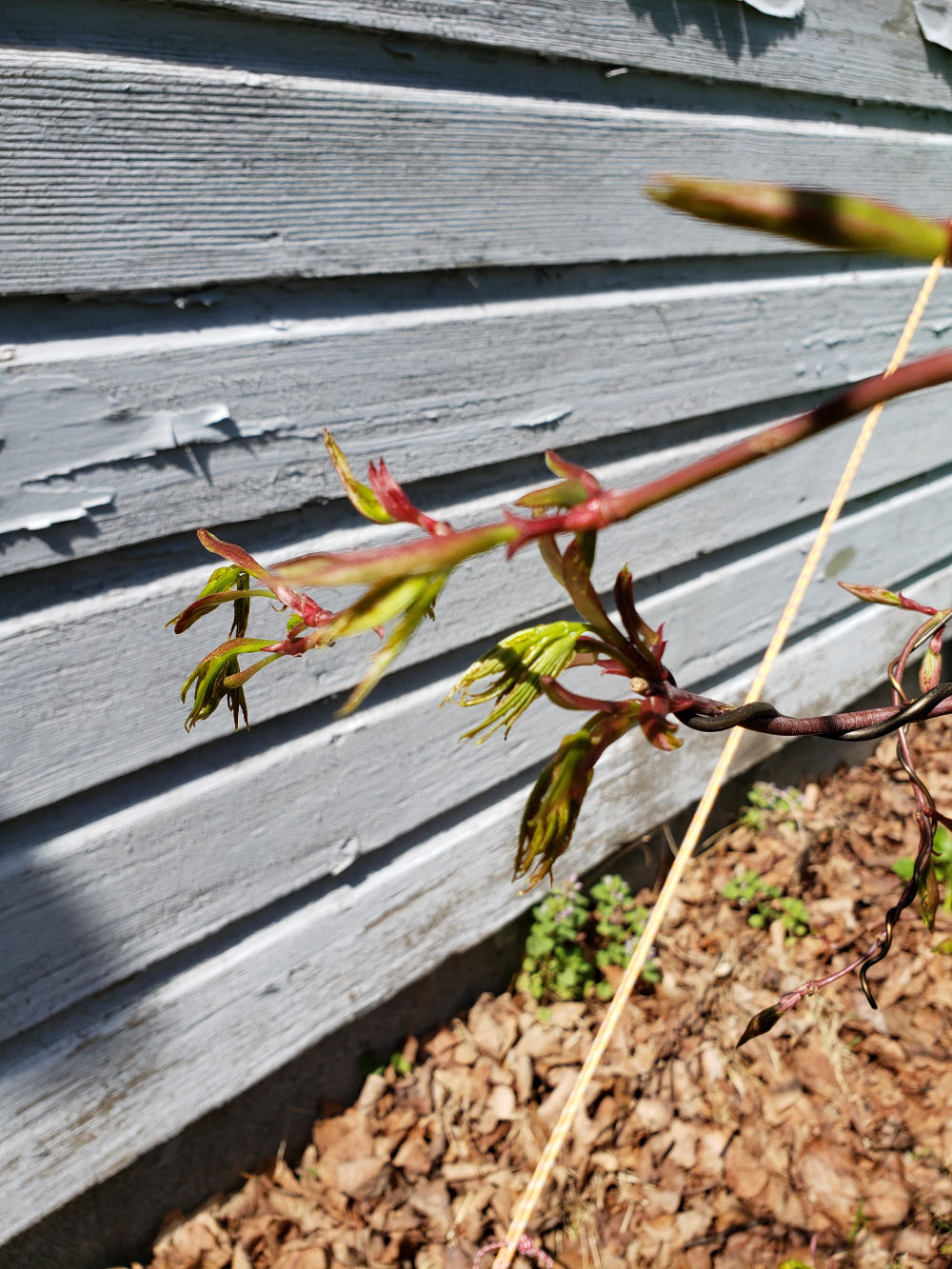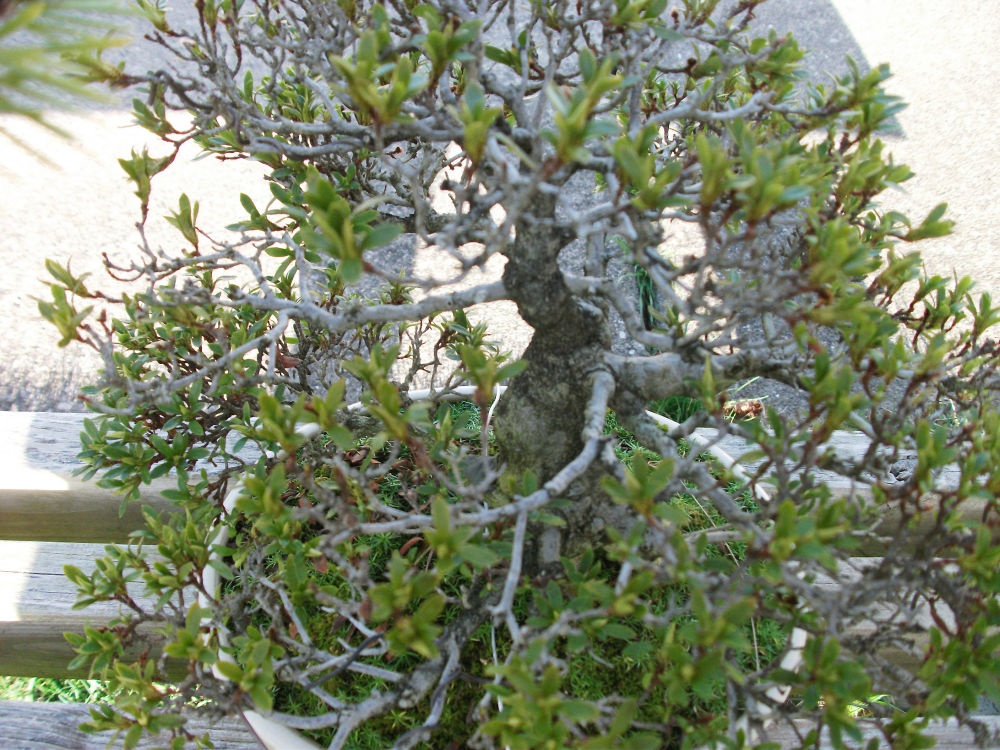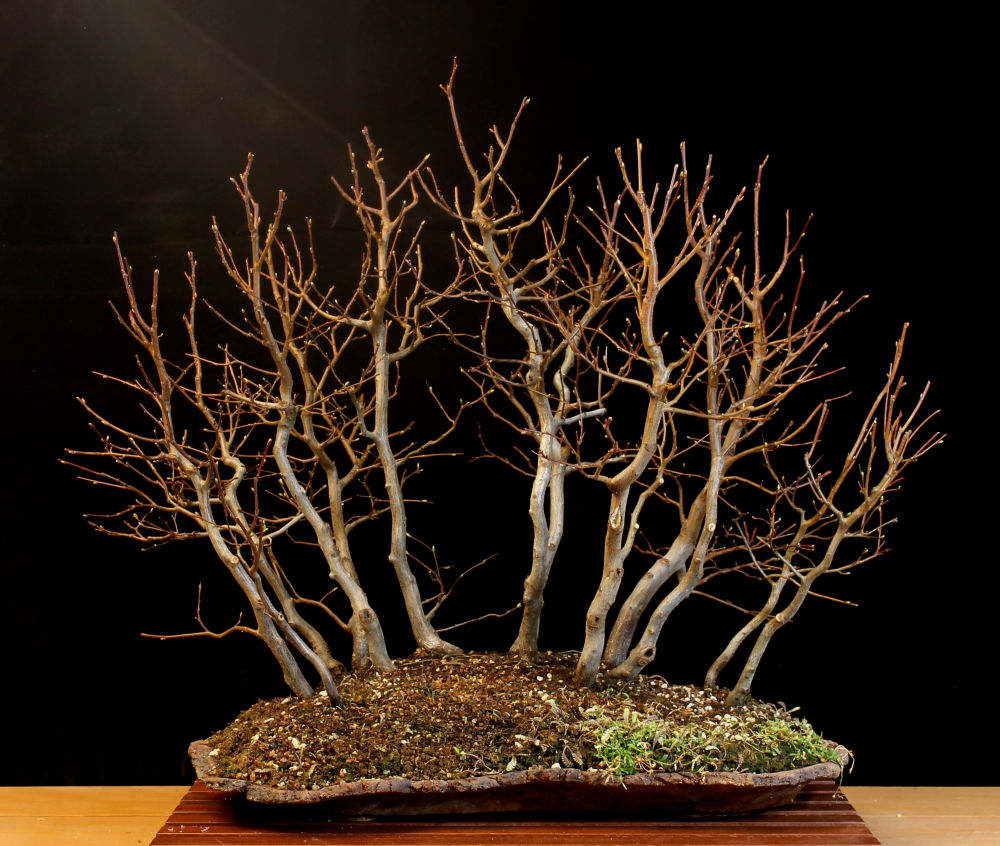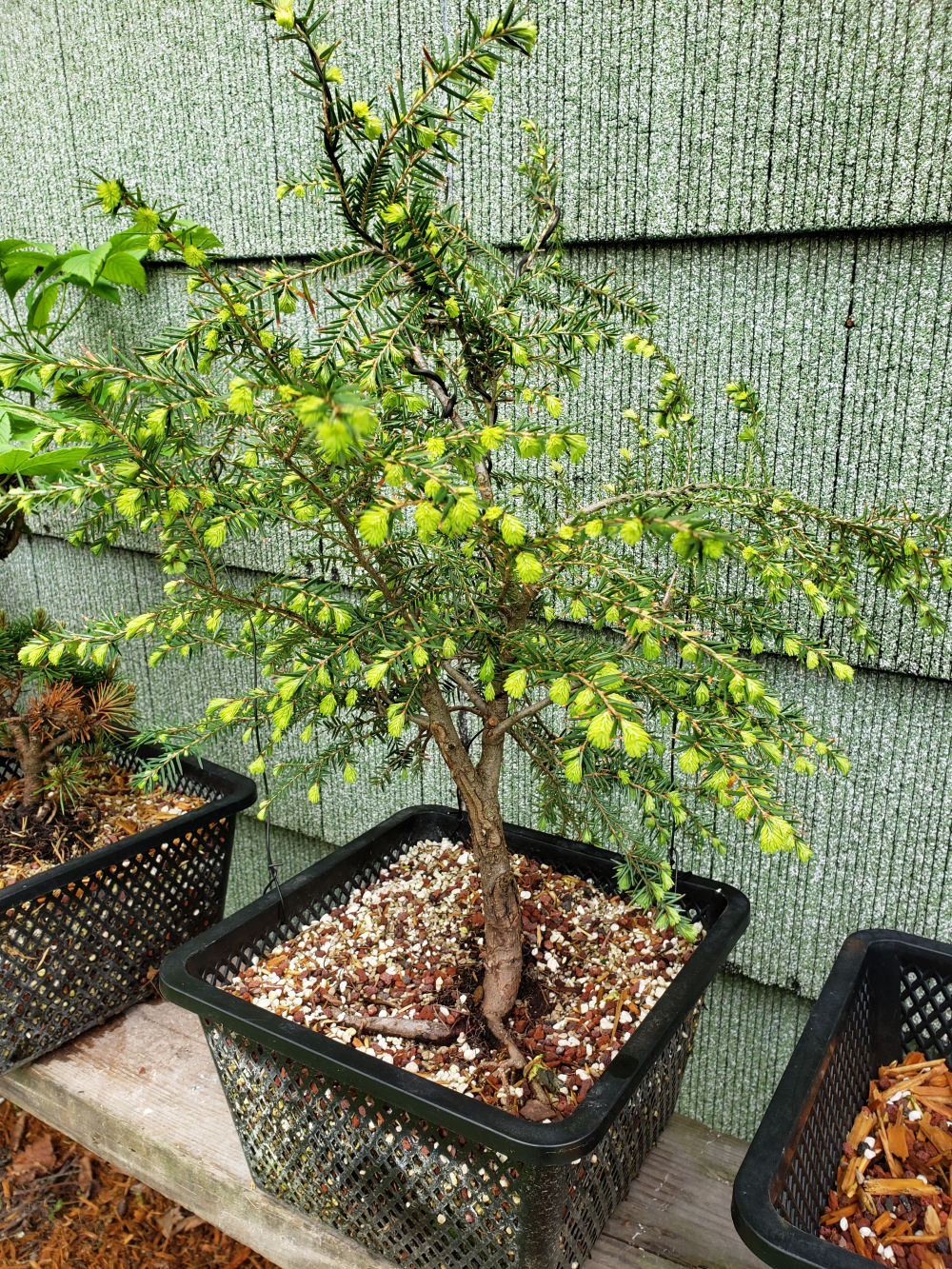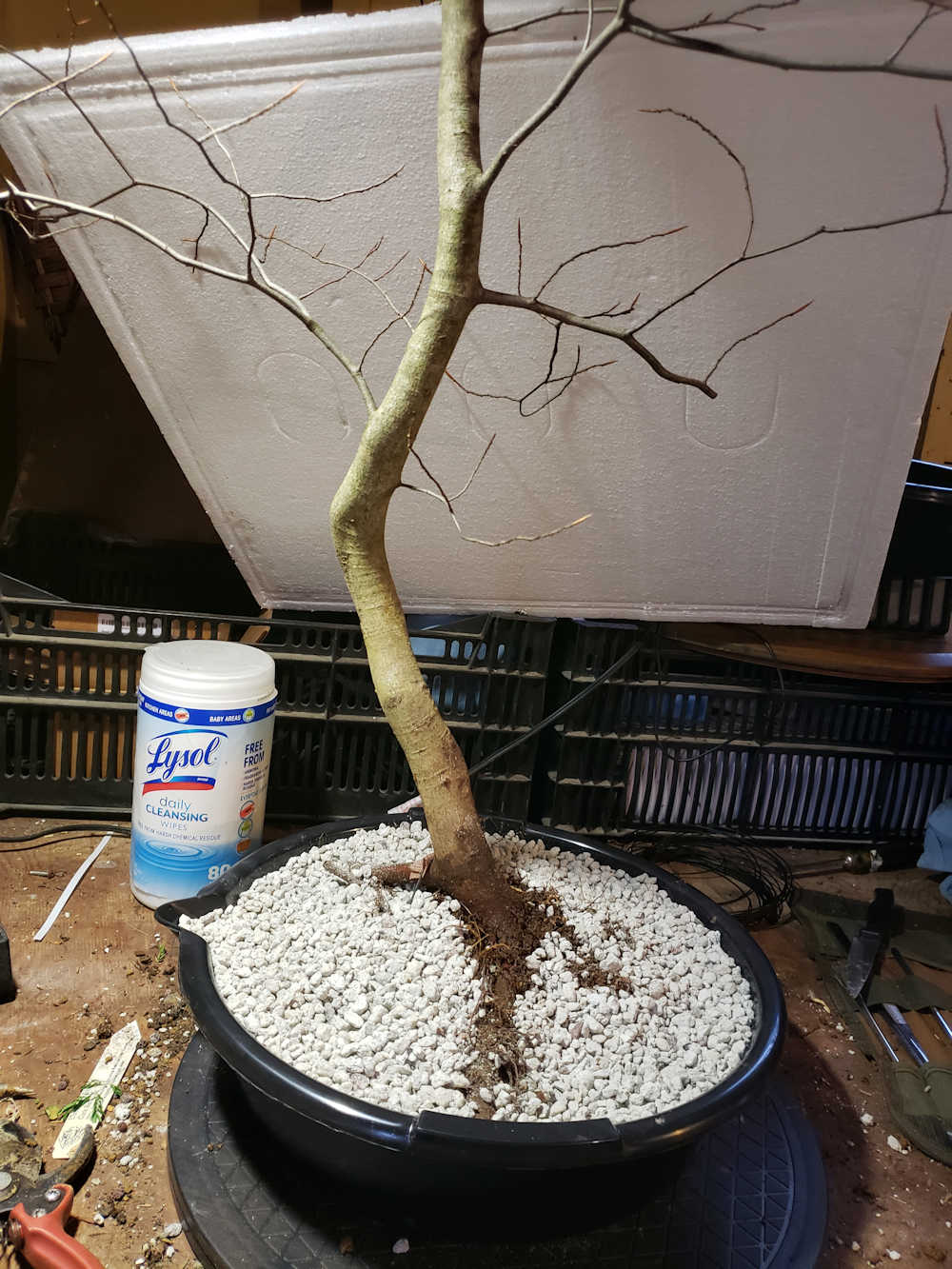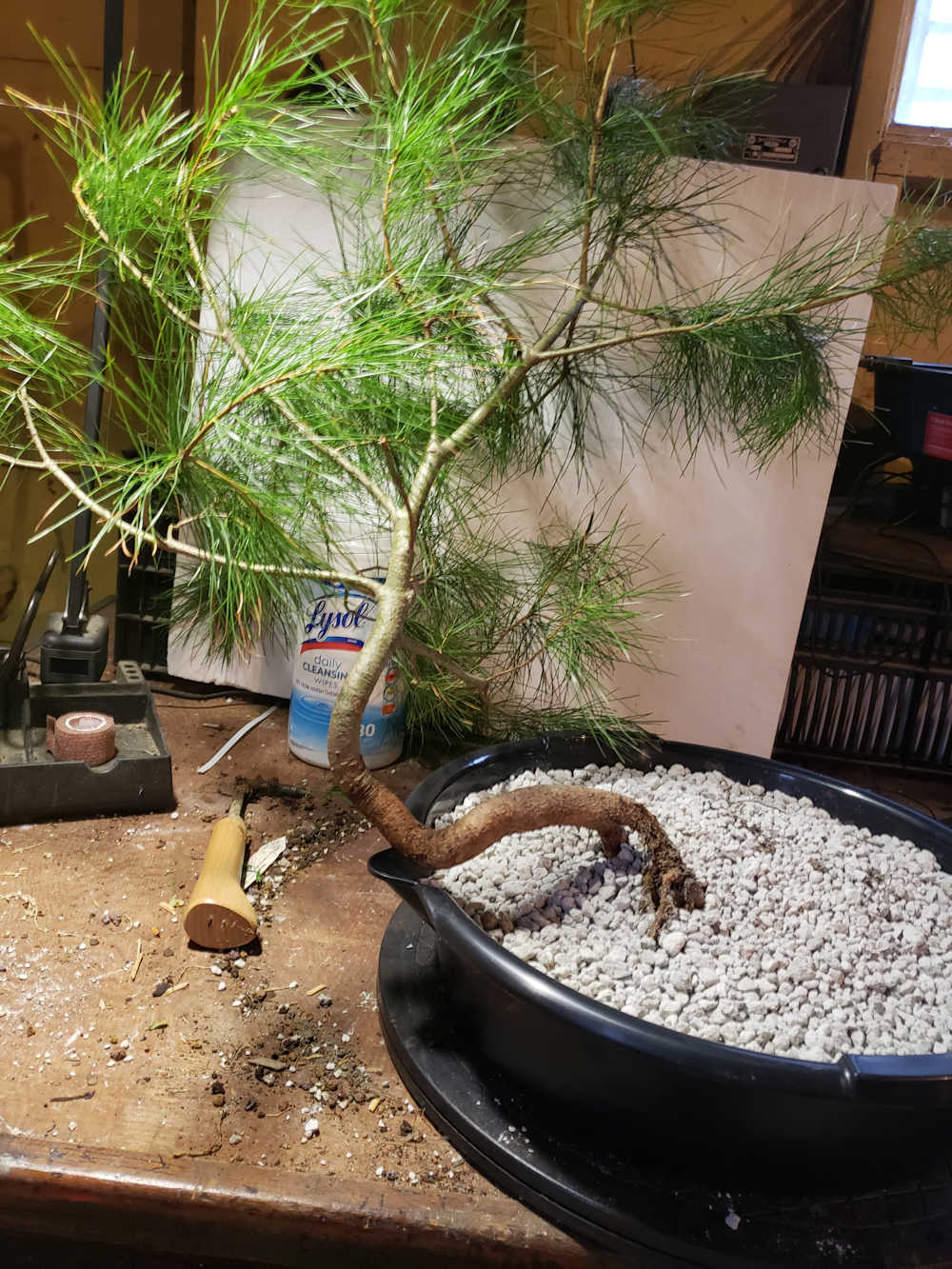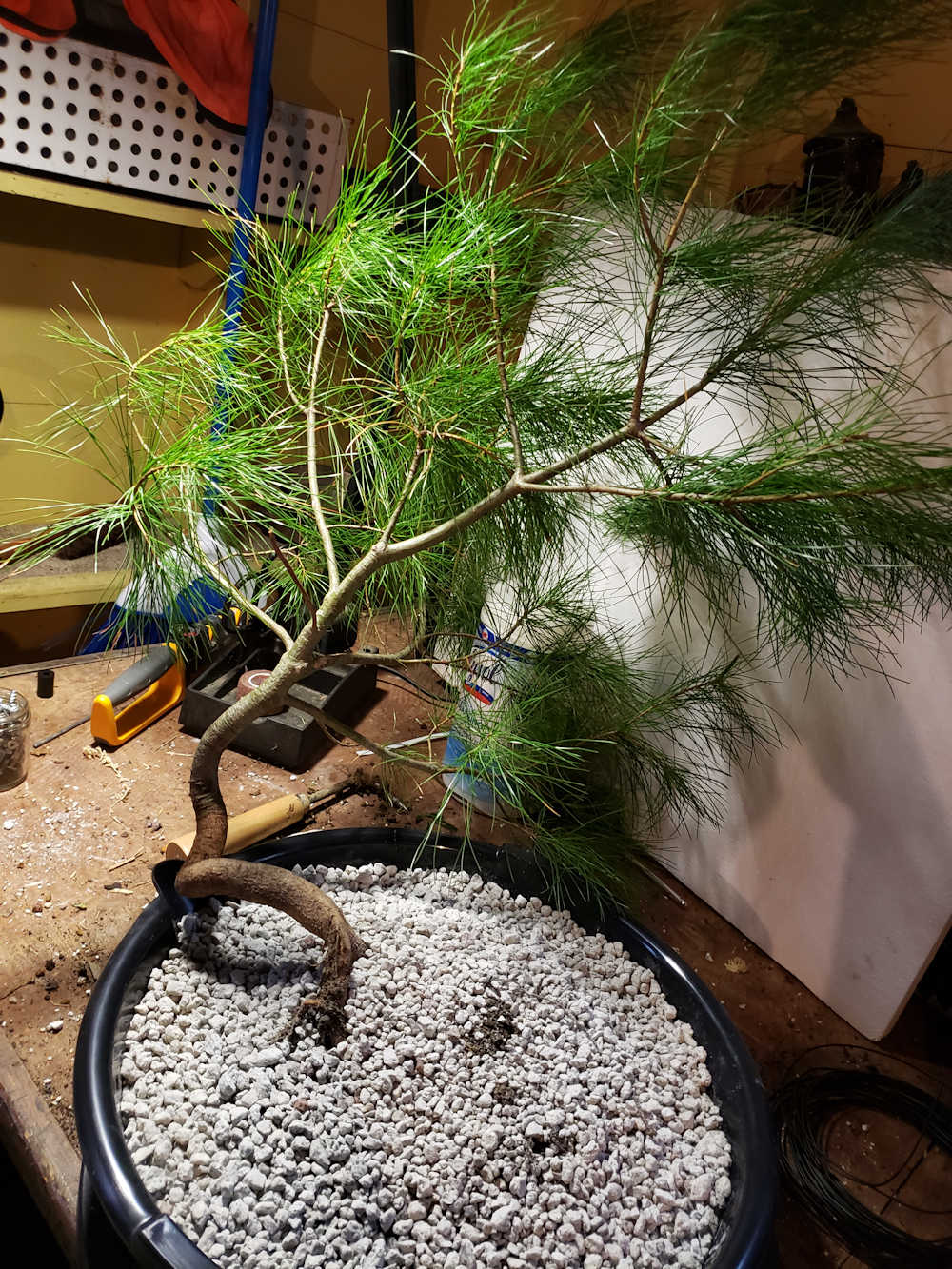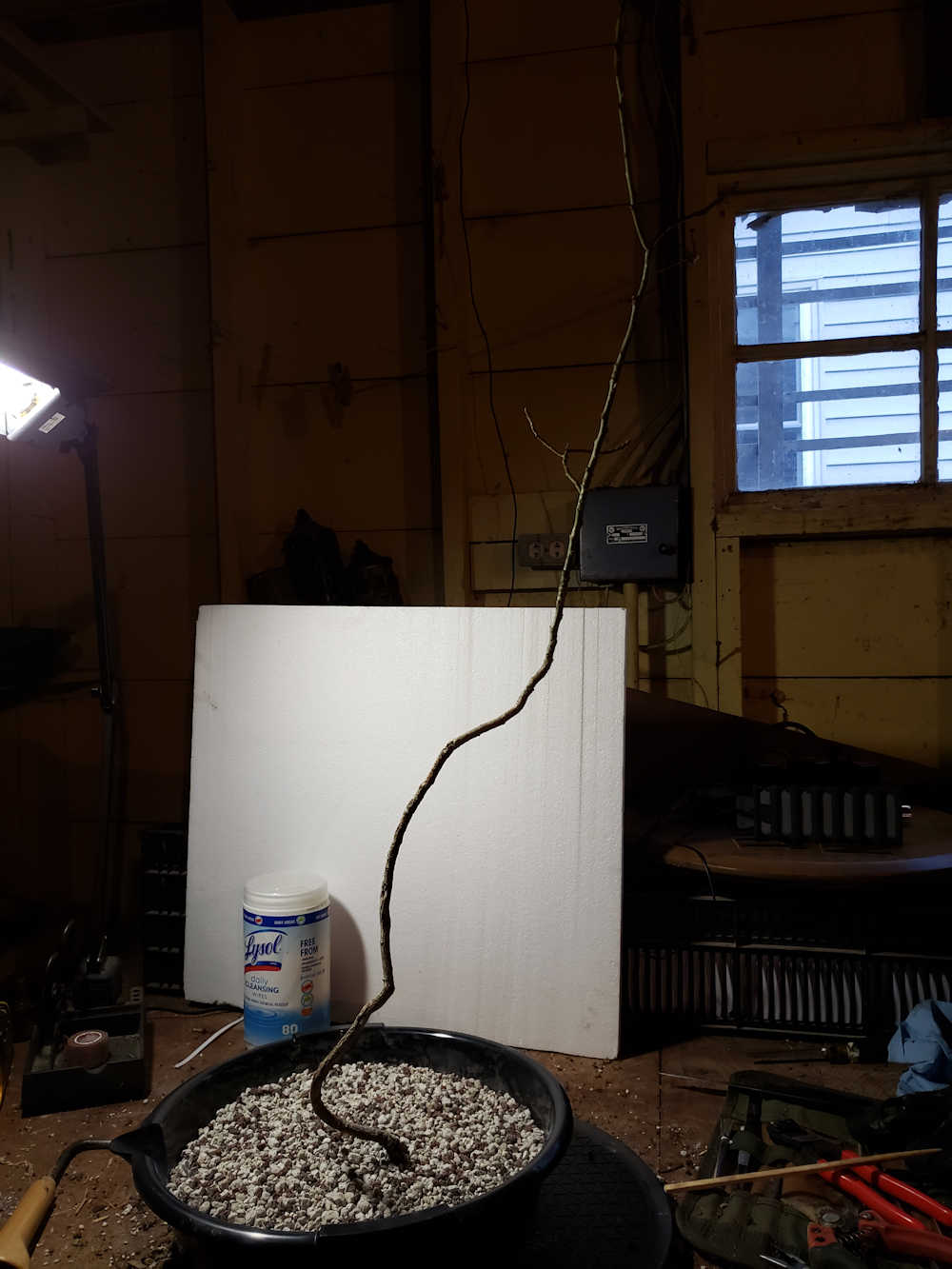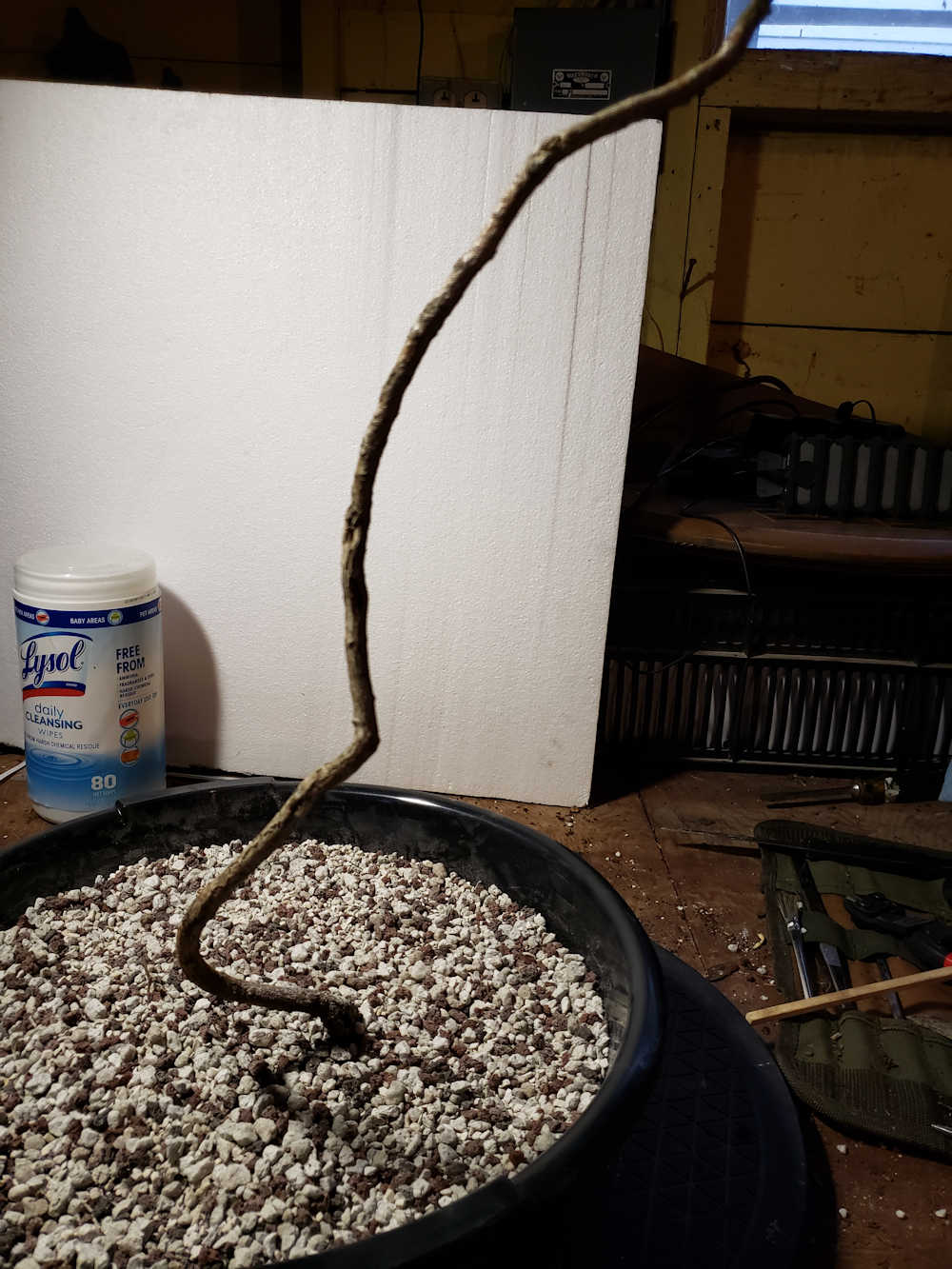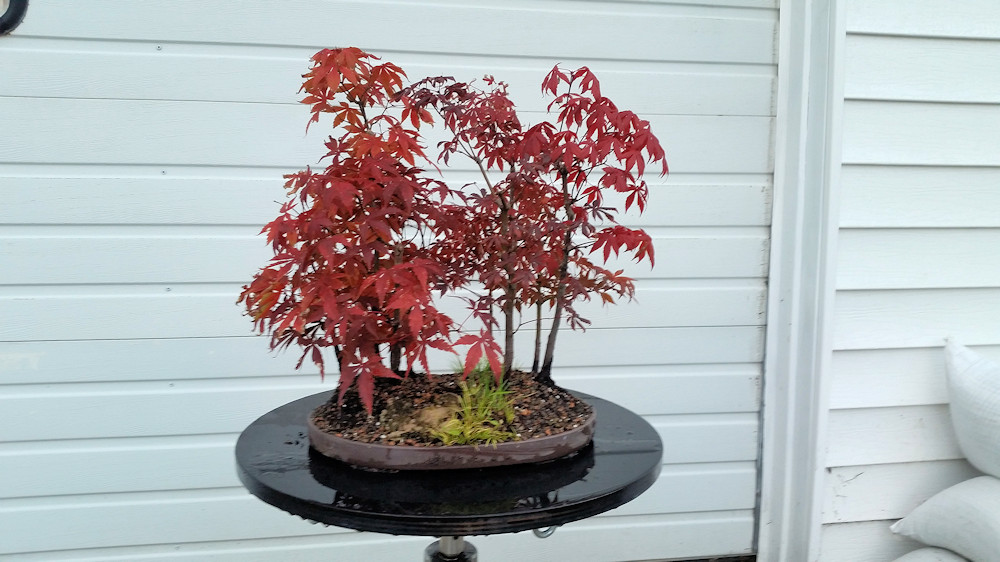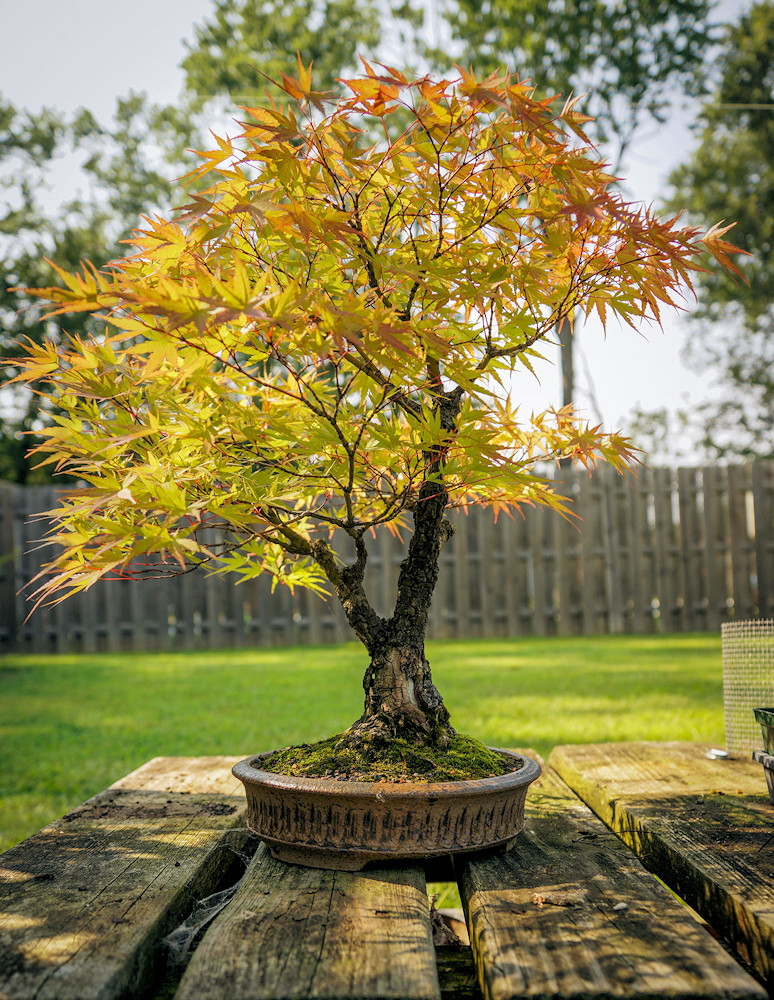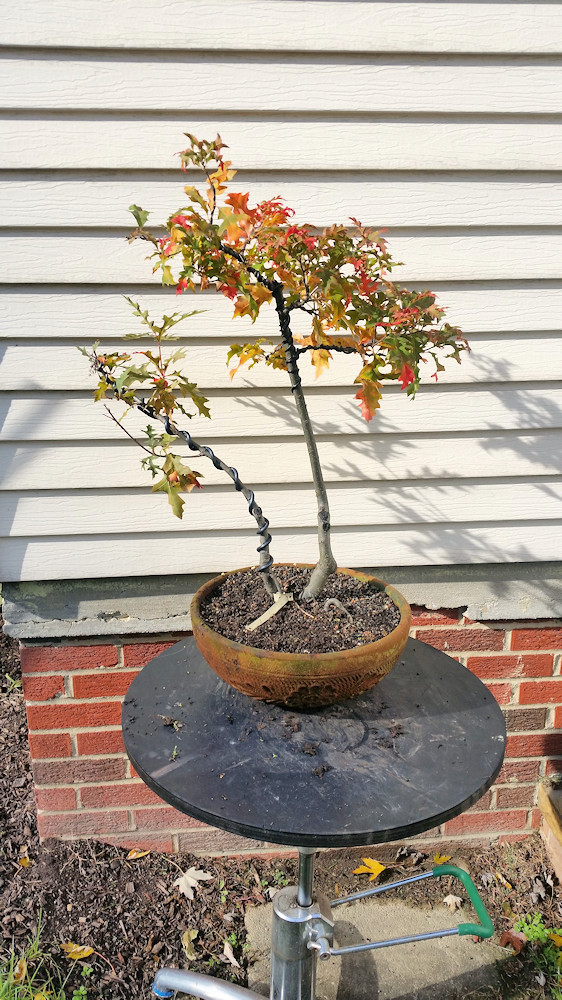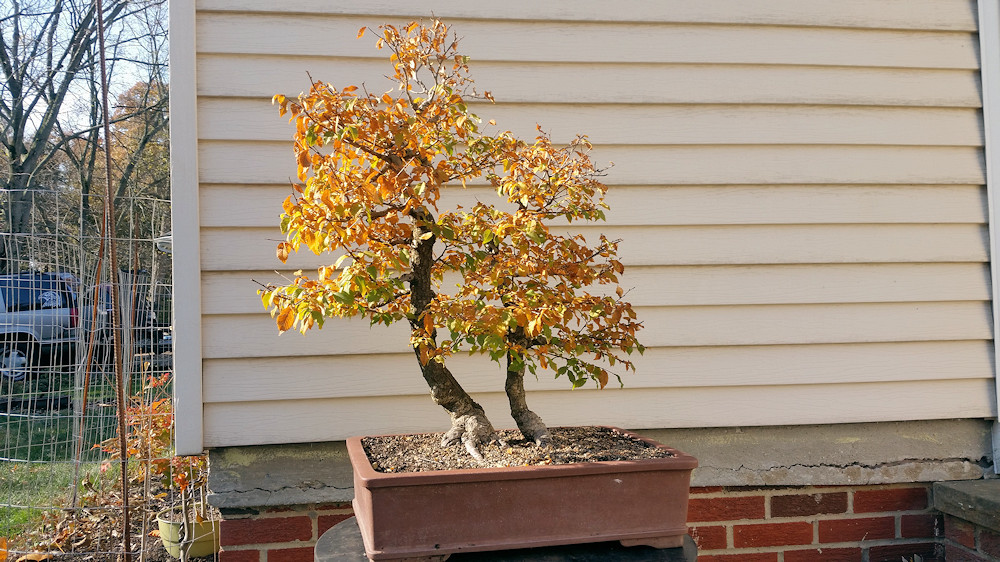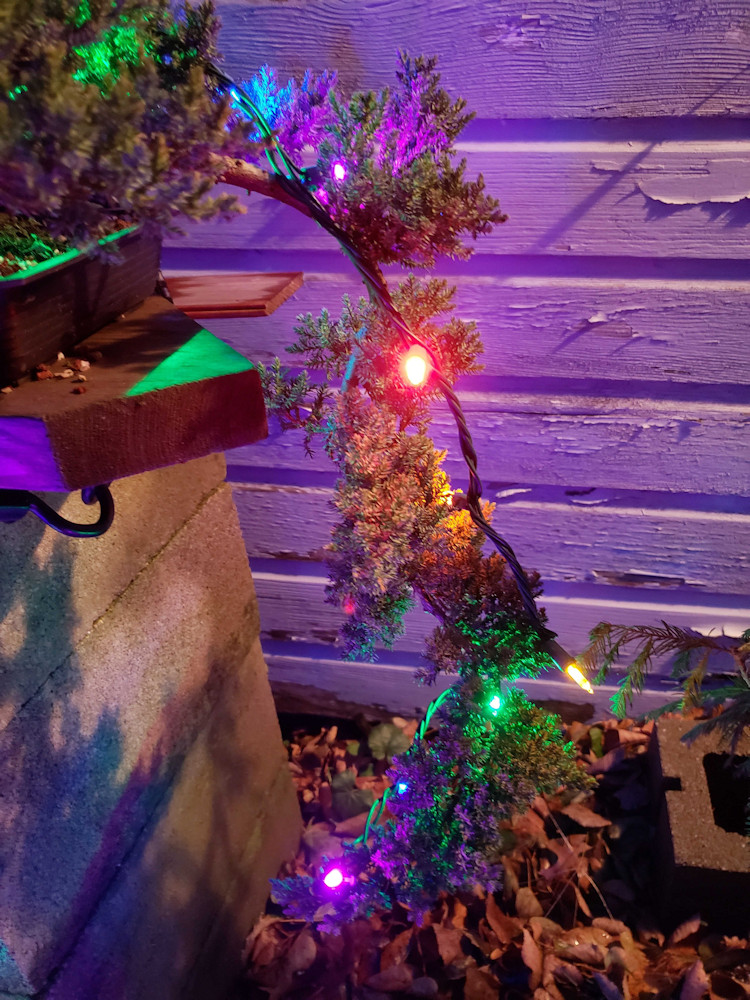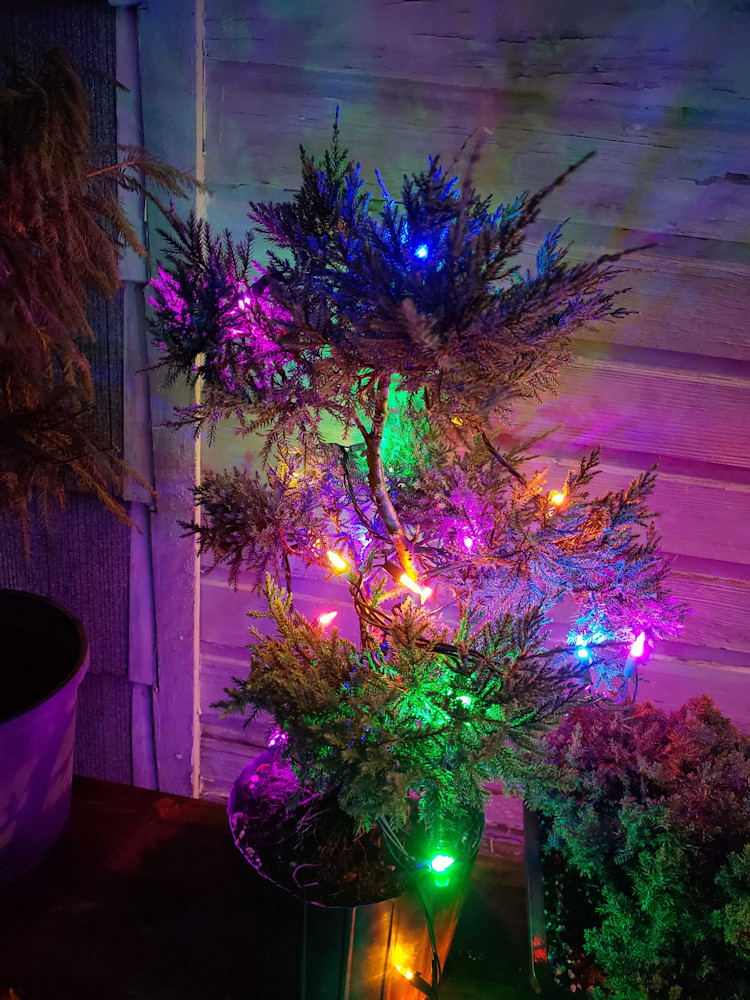Recent Posts
2019 Summer Show People’s Choice Winners!
The results of the People’s Choice voting from our 2019 Summer Show are in!
Congratulations to Alex H for his Hawaiian Schefflera which took First Place!
Second Place went to Steve Z and his Juniper Sea Green and Anne H’s Japanese Larch forest took third.
The nicest, most heartening aspect of the whole thing is that, except for a couple of trees out of the whole 60+ trees in the show, every tree appealed to at least one person enough to list it on a ballot. Tells us that each person’s efforts, even when the result isn’t a spectacular runaway winner, added a little memorable beauty that touched someone that day. What more reward could we ask for the work we put in?!
Spring awakening
Spring is a time of renewal and our bonsai trees are waking up!
Not everyone realizes that most bonsai trees are outdoor plants. While there are a few tropical species that can live indoors, even most of them prefer to be outside when it is warm. For the majority of trees, if they aren’t allowed to go through their natural cycle of dormancy they will eventually weaken and die.
Here in Cleveland, spring is upon us and our trees are coming out of their winter dormancy. Buds are cracking open to reveal new leaves, new needles, and in some cases even blooms!
Take a look at these photos submitted by a few of our members and their trees enter spring glory.
Cleveland Bonsai Club member wins MidAtlantic Bonsai Society President’s Award

The Cleveland Bonsai Club is very proud of club member Mel G who took home the President’s Award for his Shohin display, as well as Best Accent Plant, at the MidAtlantic Bonsai Society Spring Festival last month. Mel’s display consisted of: Top–Japanese Back Pine, Upper left–Star Jasmine, Upper Right–Japanese Chojubai Quince, Lower left:–Zelkova elm, Lower Right–Kumquat–Outside tree–Shimpaku Juniper. Note that each pot is a different color and shape which is one of the important criteria for a good shohin display.
Well done, Mel!
Eastern Hemlock
At our April 2019 meeting member David Bennett gave a presentation on utilizing Eastern Hemlock (Tsuga canadensis) for bonsai.
David talked about some of the benefits of this tree, such as the fact that it is locally available and hardy to the area. It is shade tolerant (though prefers sun), fast healing, has good needle reduction, and tends to have compact growth when cultivated properly.
Because it is fast growing David prefers using guy wires instead of wiring branches and pointed out that hemlocks tend to have a lot of “memory” in them and bends don’t always hold. He also warned that they don’t usually backbud on old wood so that needs to be taken into consideration when styling the tree. They are also strongly apically dominant so need frequent pinching to maintain shape.



2019 Collecting Trip
Last weekend, Cleveland Bonsai Club members Dan White and Adam Shank went on a collecting trip just south of Conesville / Coshocton Ohio. It was state-owned property with public access and we had obtained permission to collect trees for bonsai.
Browse through the images below to see our story!
Suiseki Primer

The March 2019 meeting of the Cleveland Bonsai Club featured a presentation by member Les Allen on Suiseki, the Japanese art of stone appreciation.
Suiseki are small, naturally formed stones selected for their shape, balance, simplicity, and tranquility. They invoke a feeling, memory, or impression in the viewer and can resemble landscapes, mountains, huts, people, animals, and more.
They are usually displayed on a daiza (a wooden base custom made for that particular stone) or in a shallow tray of sand called a suiban (ceramic) or doban (bronze). The display may incorporate a stand and possibly a scroll on the wall.
Suiseki are selected based on five criteria:
- Shape – balance and proportion
- Quality of material – appearance of hardness
- Color – reflection of nature
- Surface texture – varies but should never show damage
- Age – appearance of age (patina)
Some classifications include:
- Landscape Suiseki (Sansui keijo-seki): shaped like a mountain, island, waterfall, shoreline, cave, canyon, or plateau.
- Object stones (Keisho-seki): resembling a person, animal, boat, house or bridge.
- Celestial (Gensho-seki): with patterns resembling the moon, sun or stars.
- Plant (Kigata-ishi): with patterns picturing flowers, fruits, grasses, forests or even Bonsai.
- Weather (Tenko-seki): resembling rain, intense sunlight, lightning or snow.
- Abstract (Chusho-seki): with surfaces similar to animal prints, tangled nets, etc.
Suiseki are sometimes displayed along with bonsai trees and can be valued in the thousands of dollars.

Story of a Tree
Bonsai trees come in many different sizes, styles and types but one thing that is common to a refined bonsai is the appearance of age. A bonsai should appear to be much older than it actually is (in general, some bonsai truly are hundreds of years old!).

It is often said that a bonsai is the artist’s interpretation or impression of a tree. While some bonsai are replicas of full grown trees in their glory that have been rendered in miniature, there are also many that are made to look like an ancient tree that was kept small by nature and the elements. Those natural trees are the true inspiration behind the bonsai art, originally found in harsh mountainous environments. Trees that are naturally stunted in this way can be worth tens of thousands of dollars and are known as yamadori.
To me, some of the best bonsai are recreations of these unique trees found in nature and should be able to tell a story of how they ended up in such a form (rather than simply be bent into a S shape like so many mass-produced “bonsai” you might find at a box store). I like to look at these twisted form and imagine how they might have ended up that way. When designing my own bonsai, I try to continue this element of realism into the composition. Let’s look at a few trees and guess their stories.

Take this tree, for example. It is easy to imagine that while it was still young another tree fell onto it, knocking it to the ground but not killing it. As the tree recovered, it grew around the fallen trunk and branches and back up towards the sky, ending up with the twisted base and trunk that you see pictured. Eventually, the dead tree that caused all of this rotted away leaving its tale of woe in the victim’s twisted form. The tree also had to fight soil erosion that exposed the roots and threatened desiccation in the harsh environment.

In this next example, perhaps this tree was nearly blown over. But I think it is more likely that it was growing on the side of a cliff, clutching the rock face for its very life and the elements and gravity pulled down against the upward growth. A rock outcropping above could have forced the strong lean as it reached out for light. In my own backyard I have a similar tree growing beside a creek. Early spring storms flood the creek and erode the bank as the tree slowly falls over the side, held in place only by strong support roots on the other side.

This poor, tortured soul looks as if it hasn’t had a pleasant day in its life. Try as it may to thrive, harsh desert winds beat upon it, blowing sand stripped the bark, falling rocks crushed and deformed, and animals grazed on its branches. You can see where the main trunk snapped, leaving a side branch to take over as the new trunk line. Another branch was not so lucky and remains as a lifeless, bleached appendage. Yet through it all a vein of live growth persevered and managed to survive. Eventually, enough growth was able to make it above animal grazing level to thrive, a head of healthy green to contrast with the gaunt skeleton below. A constant reminder of all that was endured.

Even this strong grower was no stranger to the elements. Fate deposited multiple seeds near to each other that took root and the brothers fought each other for decades while harsh storms bent and snapped branches. Eventually, a gale broke the larger of the two nearly in half but it wasn’t enough to kill it. Weakened, it still continued to grow and struggle against the world.
When you look at bonsai trees, whether your own trees or someone else’s, what stories do they tell?
2019 Bonsai Internship
The National Bonsai & Penjing Museum located at the U.S. National Arboretum is seeking an intern for 2019. The intern will be trained by the bonsai staff in the care and maintenance of the bonsai collection. Weekend work will be required. The length of the internship is one year. The approximate start date is February 1, 2019. The internship is paid through a stipend funded by the National Bonsai Foundation.
USNAInternship2019Seasonal Color
We’re now into meteorological winter and a time of dormancy for most bonsai trees. However, the end of the season offers once last chance for enjoyment before the winter doldrums hit.
Browse through the gallery below to get a look at some seasonal color from a few of our members’ trees!
Literati Workshop
In early November, I made my third trek of the year into the hills of central Pennsylvania to visit Jim Doyle at his nursery Nature’s Way in Harrisburg, PA. The topic of the day’s workshop was Literati Bonsai.
Even if there wasn’t a forest worth of amazing bonsai material in Jim’s garden just waiting to inspire and seduce, the topic alone was enough to compel me to endure yet another 20 hour day to make the pilgrimage. The drive to Nature’s Way takes about 5-1/2 hours so at 3:30 Saturday morning I was on the road speeding thru the darkness. Upon arrival I was treated to the warm surprise of finding two friends from the CBC already there!

Anne H and Valerie T had shared in my excitement to study literati and were making a weekend trip out of it. Their own impressions and responses to the session will be shared within as well.
So, what is it about the literati style (also known as bunjin) that is so broadly captivating and admired?
I think the reason that literati is so engaging has to do with the dichotomy of the style. How does something sparse and subtle exude grace and elegance while at the same time express the enduring struggle to survive? It’s difficult to imagine this in other forms. The literati aesthetic is undeniably feminine. What would the human equivalent be? A beautiful woman in an evening gown free-climbing up a cliffside? Dramatic for sure, but the spectacle would feel out of place and awkward. Yet, in tree form, it’s an enchanting and contemplative experience. It manages to evoke such meaning and emotion from so sparse a form. It finds power in its minimalism. A thunderous silence – it says a lot with so little. Perhaps that’s why many professionals consider it the most difficult style of bonsai to pull off successfully.
Jim led the group in a soft-spoken and meditative flow as we spent the first two hours of the session reflecting and discussing on the essence and form of literati style bonsai, as well as its history. We all had our chance to describe the style in words, in feelings, and in movements. We twisted and stretched our bodies to transform ourselves into the literati form. We became ballet dancers, mountain streams, and flowing water. These mental exercises and explorations were a necessity to reorient our mind’s eye to the style itself, before even considering the material we would be working with.
Jim had curated an assortment of different species of trees for each participant to choose, study and design as part of this workshop experience. In collaborated with Jim and with each other we worked well into the afternoon. As each tree was “finished,” it was moved to the display area and the whole group paused to discuss and appreciate the other’s work.

My Lodgepole pine (Pinus contorta)
“Jim Doyle teaches through guidance, pulling one’s inner resources to light. I have been thinking on the meaning of literati bonsai ever since. It was instructive to each have different species to work on, thinking of the different growth habits of each to incorporate in our designs.” – Anne H.

Anne’s Japanese Black Pine (Pinus thunbergii)
“I enjoyed the fact that we spent a good deal of time thinking about our interpretations of literati – what it means to us using descriptors unrelated to trees – and how we interpret the style with body language as well! Such a welcoming group and I thoroughly enjoyed exploring Jim’s nursery!” – Valerie T.

Valerie’s Lodgepole Pine (Pinus contorta)
Upon completion I couldn’t resist perusing the inventory at Nature’s Way and found another spruce to add to my collection which I felt had potential to become a literati in the future. I can’t recommend a visit to Jim’s nursery strongly enough. Considering that most of the prime collected material comes from out west, we’re fortunate to have a venue in a neighboring state that offers a great variety of premium American yamadori in all price ranges. Jim also gave us a preview of workshops he will be offering in the coming year, including visits from bonsai professionals like Bjorn Bjorholm and Walter Pall.
After thanking Jim for the great workshop and saying my goodbyes, I loaded my new trees in the car and headed for home. But not without a bonus stop about an hour from Harrisburg to meet with a fellow bonsai artist and purchase yet another new spruce from him. Apparently, I have some kind of spruce addiction!





